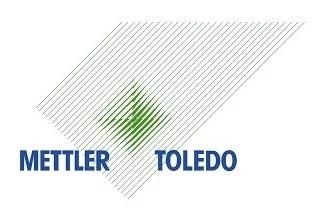Lithium-ion batteries are typically installed for use in portable electronic devices and electric vehicles (EVs). They are a popular choice due to their high energy density as they are both powerful and lightweight. Lithium ions are found in both the cathode and anode material of lithium-ion batteries.
The everyday commonplace battery type utilizes lithium graphite (LiC6) as anode and lithium cobalt oxide (LiCoO2) as a cathode. The manufacture of cathode materials generally includes a calcination step. The solid precursor salts are combined, blended, and heated. In order to produce lithium cobalt oxide (LiCoO2), lithium carbonate (Li2CO3) is amalgamated with cobalt oxide (Co3O4). This combination is heated under an oxygen atmosphere to produce the active LiCoO2 electrode.
However, chloride salts like lithium chloride (LiCl) can be found in the end product meaning it is not usually pure. These impurities are regarded as being inactive in the electrochemical reaction of the lithium-ion battery. Thus, the chloride content of the cathode material is examined post-production.
This experiment outlines a method of identifying the chloride content of lithium cobalt oxide-based cathode material. Initially, nitric acid is used to leach the powder in order to dissolve the sample. Subsequently, the chloride ions are titrated using an aqueous silver nitrate solution. The samples are titrated against a sodium chloride blank solution due to the chloride content being low. This technique is predicated on Chinese standard: GB / T 11064.10 2013.
Sample preparation and procedures
Blank measurement
Add 10 mL nitric acid solution and 30 mL deionized water to the titration beaker. Commence method M830A. The titrator adds precisely 10 mL of sodium chloride blank solution with a burette and thereafter titrates with the silver nitrate solution.
The expenditure in mmol is routinely saved as a blank value: B[NaCl].
Sample measurement
Combine 2g of LiCoO2 cathode powder and 5 mL of nitric acid solution and add into a 100 mL glass titration beaker. Stir until the sample is dissolved completely. Then, pour in 30 mL of deionized water to rinse the residues down into the solution. Place the beaker on the manual titration stand and commence method M830B.
First, the titrator adds precisely 10 mL of sodium chloride blank solution using a burette and then titrates using the silver nitrate solution. Subtracting the blank value B[NaCl] from the raw result provides the amount of chloride in the sample.

Image Credit: Mettler Toledo - Titration
Chemistry
Cl- + AgNO3 → AgCl + NO3 –
Solutions and chemicals
Titrant: Aq. silver nitrate solution, AgNO3, c = 0.005 mol/L.
Blank solution: Aq. sodium chloride solution, NaCl, c = 0.2 g/L.
Sample: Lithium cobalt oxide cathode material.
Analyte: Chloride, Cl - , M(Cl) = 35.45 g/mol, z = 1.
Standard: 6 mL Sodium chloride solution, c(NaCl) = 0.2 g/L.
Auxiliary reagents: Aq. nitric acid solution 22%; distilled water.
Instruments and accessories
- Burette 10 mL DV1010 (51107501)
- Burette 20 mL DV1020 (51107502)
- Excellence Titrator T5 (30252672), T7 (30252675) or T9 (30252676)
- Dosing unit (51109030)
- XPR205 Analytical Balance (30355411)
- 100 mL Glass titration beakers (101446)
- DMi141-SC electrode (51109530)
Results and discussion
It was established that the chloride content was identified as 30.5 ppm with an srel of 4%.
Source: Mettler Toledo - Titration
| |
R1: Chloride Content [ppm] |
1
2
3 |
29.5
30.0
31.9 |
Mean
s
srel |
30.5
1.3
4.1% |
Remarks
The inclusion of the sodium chloride blank solution can be carried out using a manual glass burette. With small modifications, it is possible to adapt the method to a METTLER TOLEDO G20S compact Titrator.
If the cathode material fails to dissolve, adding a small amount of hydrogen peroxide (H2O2) to the nitric acid solution (1.5% H2O2 in 22% nitric acid) can accelerate the process. The acidic leaching/dissolution of the lithium cobalt oxide generates carbon dioxide gas.
Waste disposal and safety measures
A fume hood must be used for the acidic dissolution of the cathode material. Wear, gloves, safety goggles and a lab coat. Disposal of the contents of the titration beakers should be into the aqueous heavy metal waste.
References
Chinese standard: GB / T 11064.10-2013 lithium carbonate, lithium hydroxide monohydrate, Methods for chemical analysis of lithium chloride Part 3: Determination of lithium chloride content with potentiometric titration.
Titration curve

Titration curve and first derivative of the titration curve of sample 2. Image Credit: Mettler Toledo - Titration
About Mettler Toledo - Titration![]()

METTLER TOLEDO instruments are used in research, scientific and quality control labs, amongst many others in the pharmaceutical, chemical, food and cosmetics industries. They are a global market leader with the three instrument groups most frequently used in the laboratory, like balances, pipettes, and pH meters, and we are a pioneer in the field of Automated Chemistry.
METTLER TOLEDO industrial solutions cover the diverse steps in a host of manufacturing processes at many of the same customers as served for the laboratory. Solutions range from receiving raw materials, in-line process control and end-of-line packaging control, to logistics and shipping. Increasingly, these solutions are fully integrated into the customer's IT environment, helping automate their workflows.
Sponsored Content Policy: News-Medical.net publishes articles and related content that may be derived from sources where we have existing commercial relationships, provided such content adds value to the core editorial ethos of News-Medical.Net which is to educate and inform site visitors interested in medical research, science, medical devices and treatments.